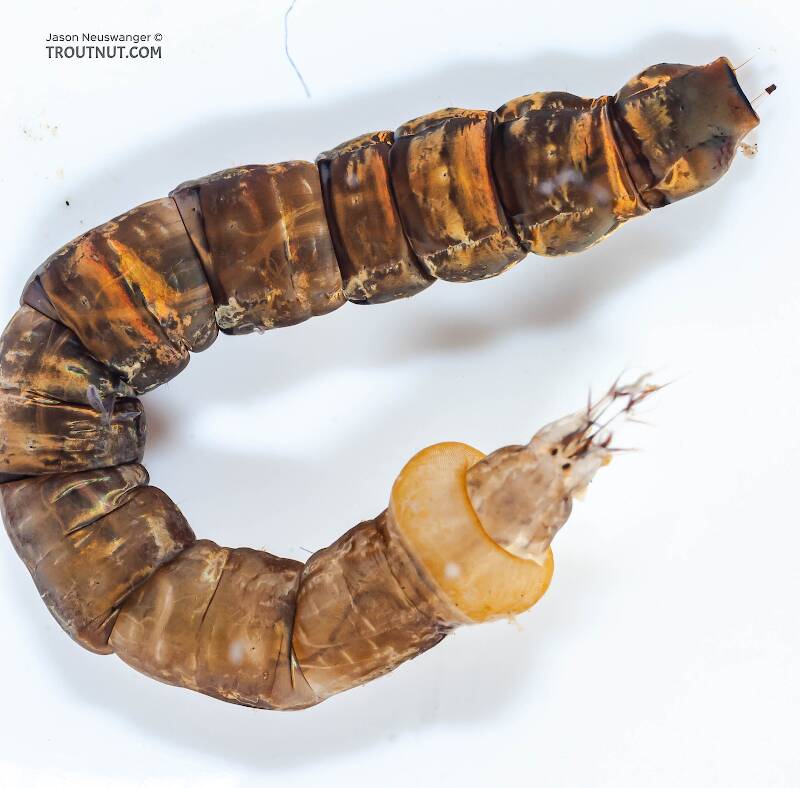
Blue-winged Olives
Baetis
Tiny Baetis mayflies are perhaps the most commonly encountered and imitated by anglers on all American trout streams due to their great abundance, widespread distribution, and trout-friendly emergence habits.
Featured on the forum

Troutnut is a project started in 2003 by salmonid ecologist Jason "Troutnut" Neuswanger to help anglers and
fly tyers unabashedly embrace the entomological side of the sport. Learn more about Troutnut or
support the project for an enhanced experience here.
Limoniid Crane Flies
This common name refers to only one family. Click its scientific name to learn more.
True Fly Family Limoniidae
These are pretty much always called Limoniid Crane Flies.
See Tipulidae for details about craneflies. This family is not known to differ from them in any ways important to anglers except appearance.

I'm not sure if this cranefly larva is in the genus Hexatoma or Limnophila, but the habitat suggests Hexatoma. Its coloring is iridescent, and I've never heard of that before. However, there is an insect virus genus Iridovirus which can infect craneflies and causes iridescence. It has not been reported in this region as far as I can tell, but perhaps it is the culprit. It makes for beautiful pictures.
See 4 more specimens...


